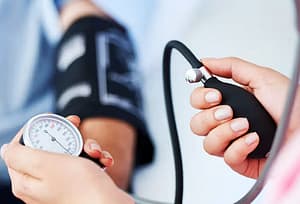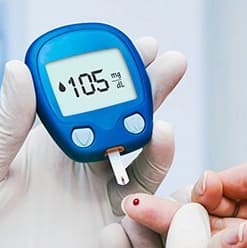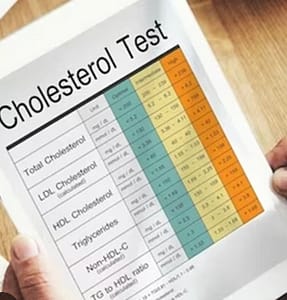Heart Attacks in Younger Adults
“Heart attacks are on the rise for people less than 50 years old,”
The truth? Heart disease (the catch-all condition under which heart attack is one subset) accounts for almost one in five deaths among adults between the ages of 25 and 64, according to a recent review in Trends in Cardiovascular Medicine. Young men are most susceptible, but young women are vulnerable in a different way: “While heart attacks are more common in men, young women are 1.6 times more likely to die in the first year following a heart attack.”
Recently cardiologists say these factors are contributing to an increase in young adult heart attacks:
High Blood Pressure

Elevated blood pressure is a well-established cardiovascular disease risk factor. If your blood pressure is too high for too long, it can damage your arteries. What’s more, research shows that high blood pressure in early adulthood can still be a problem for your heart years later. In other words, managing blood pressure when you’re younger really matters.
Obesity

Extra kgs don’t directly cause heart attacks, but they lead to other dangerous conditions for your heart such as high cholesterol, high blood pressure, and diabetes, all of which can cause plaque to build up in the arteries, thus increasing heart attack risk. Obesity is on the rise in all age groups and researchers project a sixfold increase in the number of adults with obesity in 40 years, according to Nature Reviews Cardiology.
Diabetes

People with type 2 diabetes are more likely to have a heart attack. In fact, if you have diabetes, you’re twice as likely to have heart disease than someone who doesn’t have diabetes, and at a younger age. A probable cause? The high blood sugar that is associated with diabetes can damage your blood vessels and the nerves that control your heart. Though type 2 diabetes was historically a disease people got in older age, the number of teens and young adults (ages 10 to 19) with type 2 diabetes has doubled in the last two decades.
High Cholesterol

Your body needs cholesterol to build healthy cells, but too much of a good thing can lead to a heart attack. High cholesterol can cause fatty deposits to develop in your blood vessels. As these deposits grow, it makes it difficult for enough blood to flow through your arteries to reach your heart. What’s more, the deposits can break off from the artery walls and form a clot that causes a heart attack.
Adding to the issue, high cholesterol as a young adult increases the risk of cardiovascular events compared to those who develop high cholesterol later in life, according to research in the Journal of the American College of Cardiology, making young adults a prime target for heart attack if they also have high cholesterol.
COVID-19
A 2022 study of 150,000 people with COVID-19 showed that even a full year after initial infection, the risk for developing a heart condition, such as irregular heartbeat, heart failure, inflammation, or heart attack, was “substantial.” A co-author of the study estimates that 4% of individuals with COVID-19 will go on to experience heart complications, which may seem small until you consider that, to date, it’s estimated that most of the Indians, with many more likely to become infected here and around the globe in the coming months and years. And long COVID has also been shown to lead to heart problems in some people. .
Blood Vessel Tears
“For young women who present with heart attacks, we also see tears in their blood vessels in their coronary arteries, known as a spontaneous coronary artery dissection.” . The cause of spontaneous coronary artery dissection is unknown, but it tends to affect women more than men, according to the Mayo Clinic. During spontaneous coronary artery dissection, blood becomes trapped between one of the three layers that makes up the artery wall, per the American Heart Association. This trapped blood then bulges inward, blocking the artery and causing a heart attack.
Family History
Part of the rise in young adult heart attacks may be attributable to the previous generation: According to the Cleveland Clinic, heart disease risk rises if you have a parent or sibling with a history of heart disease before the age of 55 for men or 65 for women. “Knowing your family history could indicate not only your heart attack risk, but also the timing of your risk,” . Genetics and culture may also play a role in heart attack risk.
Substance Abuse
Another possible risk factor behind the increase in heart attacks among younger adults is the use of marijuana and cocaine. In an study about heart attacks in young people, researchers discovered the youngest heart attack patients were more likely to report substance abuse, including marijuana and cocaine. Methamphetamine abuse, alcohol abuse, and opioid abuse are also associated with hospital visits for heart failure.
The researchers also found that females had the highest risk.
Mental Health Issues
Heart issues and mental health go hand in hand. Stress, depression, and anxiety are all on the rise in young adults, which should not be overlooked. “We need to be aware of the potential relationship between mental health struggles and heart attacks,” he says. In fact, young adults with depression or overall poor mental health report more heart attacks, strokes and risk factors for cardiovascular disease than their peers without mental health issues, according to 2023 research published in the Journal of the American Heart Association. The study sample included almost 60,000 young adults ages 18 to 49 years.
Heart Attack Signs in Young Adults
Heart attacks can look different for different people- “For many people, it can look like pressure, pain, or a squeezing or burning sensation in the middle of the chest or in the upper abdomen, particularly with exertion,” . Doctorsays that people sometimes confuse acid reflux with heart disease, but it is possible to tell them apart. “One of the main differences is you will feel a worsening of heart symptoms in relation to exercise,” . “When the heart symptoms worsen, the pain or burning sensation could radiate to the jaw, arm, or to the back.”
Moreover, women may experience a heart attack differently, according to Johns Hopkins Medicine. Women are more likely than men are to have less recognizable heart attack symptoms, such as:
-
Cold sweats
-
Fatigue
-
Light headedness
-
Nausea and vomiting
-
Pain or discomfort in different parts of the upper body (back, neck, jaw, arms, or stomach)
-
Shortness of breath
How Can You Lower Your Risk?
One of the biggest challenges when it comes to heart attacks in young adults is that most people have no idea they are at risk.
Expert say preventing heart disease throughout life is a process. Young people can follow these advices:
- have regular wellness checks with a doctor
- learn their family history of heart health to understand their risk
- stay physically active-The American Heart Association and the American College of Sports Medicine both recommend combining aerobic exercise (jogging, swimming, biking) with resistance training (moderate weightlifting). Together, these two categories of exercise produce the greatest benefit for preventing and managing heart disease
- avoid smoking and second-hand smoke
- limit stress wherever possible
- develop heart-healthy habits, such as daily walks or planting a vegetable garden
Lowering your risk of an early heart attack can be as straightforward as being aware of what you are eating and how much you’re exercising-simple things like how much sugar you add to your coffee can add up, At the end of the day, lowering your risk of a heart attack isn’t about one mega change—it’s the little everyday details that add up.





